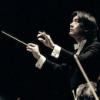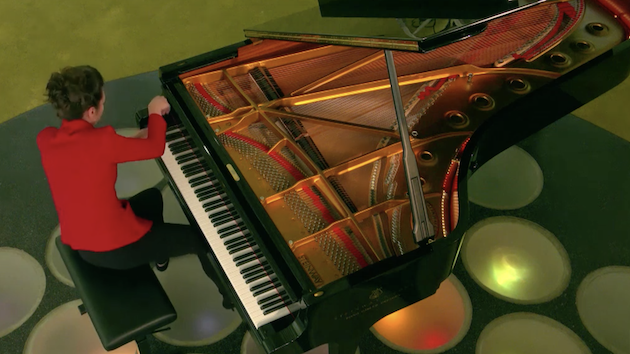
Besides being a towering 20th-century symphonist, Dmitri Shostakovich was also a virtuoso pianist. He loved to play — and it broke his heart when his right hand gradually weakened from his 50s onward. Given his prolific composing energies, his output for solo piano was ironically small, filling only about the equivalent of six CDs, half of which can be taken up by the 24 Preludes and Fugues Op. 87, his gigantic answer to J.S. Bach’s Well-Tempered Clavier.
Yet there is more — how much more is unclear — and some of it was sent belatedly out into the world Sunday (July 5) when the International Shostakovich Tage Gohrisch in Germany put together a 55-minute joint virtual recital by three millennial-generation Russian pianists — Yulianna Avdeeva, Dmitry Masleev, and Daniil Trifonov. They promised nine world premieres of brief Shostakovich piano pieces that were “discovered” by his estate a few months ago. The program was supposed to have been part of the ISTG’s festival last spring, but when the coronavirus cancelled everything in sight, they recorded the three pianists in separate locations around the world instead.
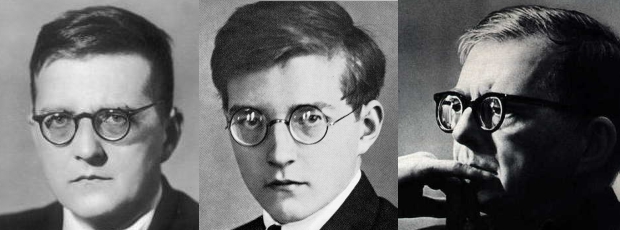
Germany’s public broadcaster MDR and European TV network ARTE Concert joined in, and Deutsche Grammophon signed up when they realized that their superstar artist Trifonov was involved. Three streaming services — ARTE, DG’s YouTube channel, and the festival’s own — carried it simultaneously, and MDR-KLASSIK and MDR-KULTUR carried the audio feed it on radio. The program was mostly juvenilia, but it was Shostakovich — and thus, a big deal.
It didn’t go quite as smoothly as planned. Scheduled for 11 a.m. PDT, DG’s feed was held up for well over an hour due to difficulties in getting the transmission from MDR (ARTE’s feed started on time), and when it finally emerged, there were a few glitches in the sound. Such is the digital world in which we have to live in these pandemic times.
From the Hotel Albrechtshof in Gohrisch just outside Dresden, Germany — where Shostakovich stayed in 1960 — Avdeeva launched things with the Piano Sonata No. 1, a nonpremiere, but a difficult, not-often-performed work from Shostakovich’s 20th year (1926). The main influence I hear in this work is Prokofiev in the sharp accents and rhythms, along with the wild dissonances that Shostakovich was experimenting with in his short-lived avant-garde period before Stalin cracked down. Avdeeva did not hold back its percussive fury, whacking the bottommost keys in the bass of the Hamburg Steinway as hard as she could before floating through the quiet interlude before the closing storm.
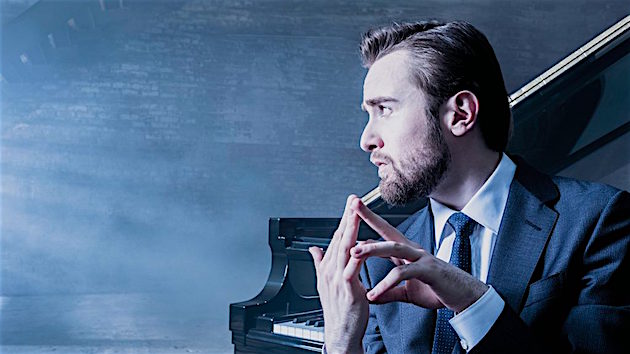
With hair casually askew, dressed in a black coat and tee-shirt, thoughtfully wearing an N95 face mask, Trifonov hosted the worldwide audience from the Fazioli piano in his music room at home in Greenwich, Connecticut. He trotted out the first set of world premieres — three short fugues, most likely conservatory exercises, the first slow and methodical, the second lively and complex (apparently a first draft that turned up in more elaborated form in Op. 87 much later), and the third pastoral in nature, meandering through the landscape. Next came a Scherzo in F-sharp minor (now designated Op. 1a), a really accomplished piece full of surprising twists, again flavored by Prokofiev, with a leisurely Chopin-like interlude. This one dated from 1921, when Shostakovich was a mere 15. Trifonov treated the pieces as seriously as if they were mature virtuoso vehicles.
From there, we were whisked all the way to Moscow’s famous, now dark and empty Tchaikovsky Concert Hall where Masleev performed a set of “discoveries” from the years 1918 to 1920 — real juvenilia from the composer’s 12th to 14th years. Here, things got a bit murky.
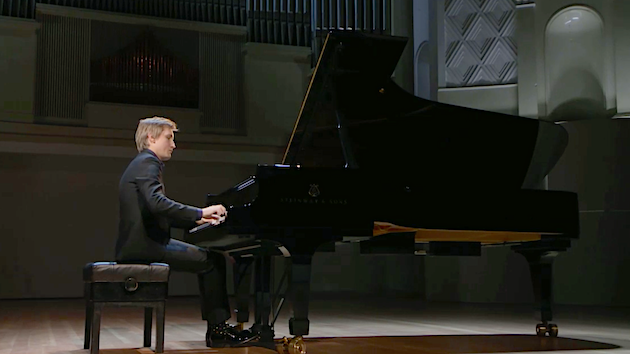
The advance publicity promised a set of Sechs (6) Klavierstücke aus den Jahren 1918–1920, but there were actually ten. The Funeral March in Memory of Victims of the Revolution is not the piece of that title as detailed in Sofia Moshevich’s 2004 book Dmitri Shostakovich, Pianist, in which bars 1–6 are reproduced on the page (the latter is in C-sharp minor, whereas the piece heard here is in B minor). It turns out that Praeludium-March is what Moshevich was illustrating. In any case, both pieces are heavily weighted in Chopin’s funeral march manner. The first bars of the slight Minuet and dashing Intermezzo are also printed in the book, so one wonders whether these were indeed world-premiere performances.
Of the others in the set: Nostalgie is also Chopin-influenced, though not as funereal. Stück (Piece) in C is almost a salon work — pretty, with ripples and flourishes. Another Praeludium sounds unfinished. Bagatelle is a delightful rapid-fire toccata; an untitled piece is a jocular rapid dance with a romantic interlude, ending with thundering octaves in the bass. The watery In the Forest was not a premiere, according to the ISTG website. Though his sense of rhythm sometimes emerges, the inimitable Shostakovich harmonic language is inaudible in these early pieces, but they should still fascinate the faithful.
Finally, we were back in Germany as Avdeeva presented a Prelude and Fugue in C-sharp minor in which a friend of Shostakovich’s, Krzysztof Meyer, completed a fragment of a Prelude that was originally destined for Op. 87 and then composed his own fugue as a follow-up — one that is inimitably pitched in the language of Op. 87. A dashing little piece, enough of the Shostakovich sound was present to show how far he had come since his teen musings.
All things considered, with the varied camera placements and, when the stream was working, decent grand piano sound (as heard through headphones and a 5.1 computer sound system), this kind of intimate, newsworthy, virtual recital program worked well on a laptop screen, whereas a grander concert spectacle might not have.




